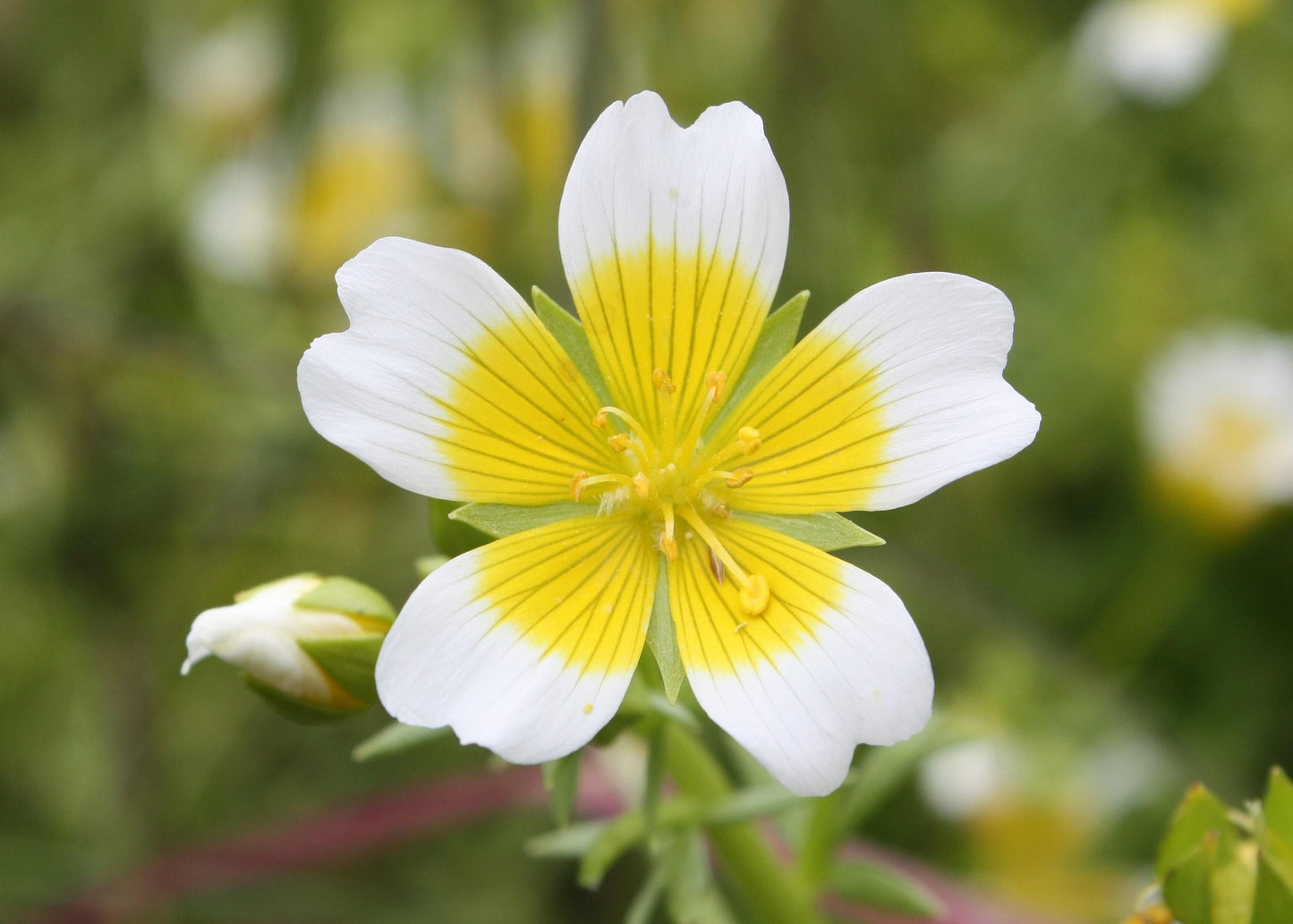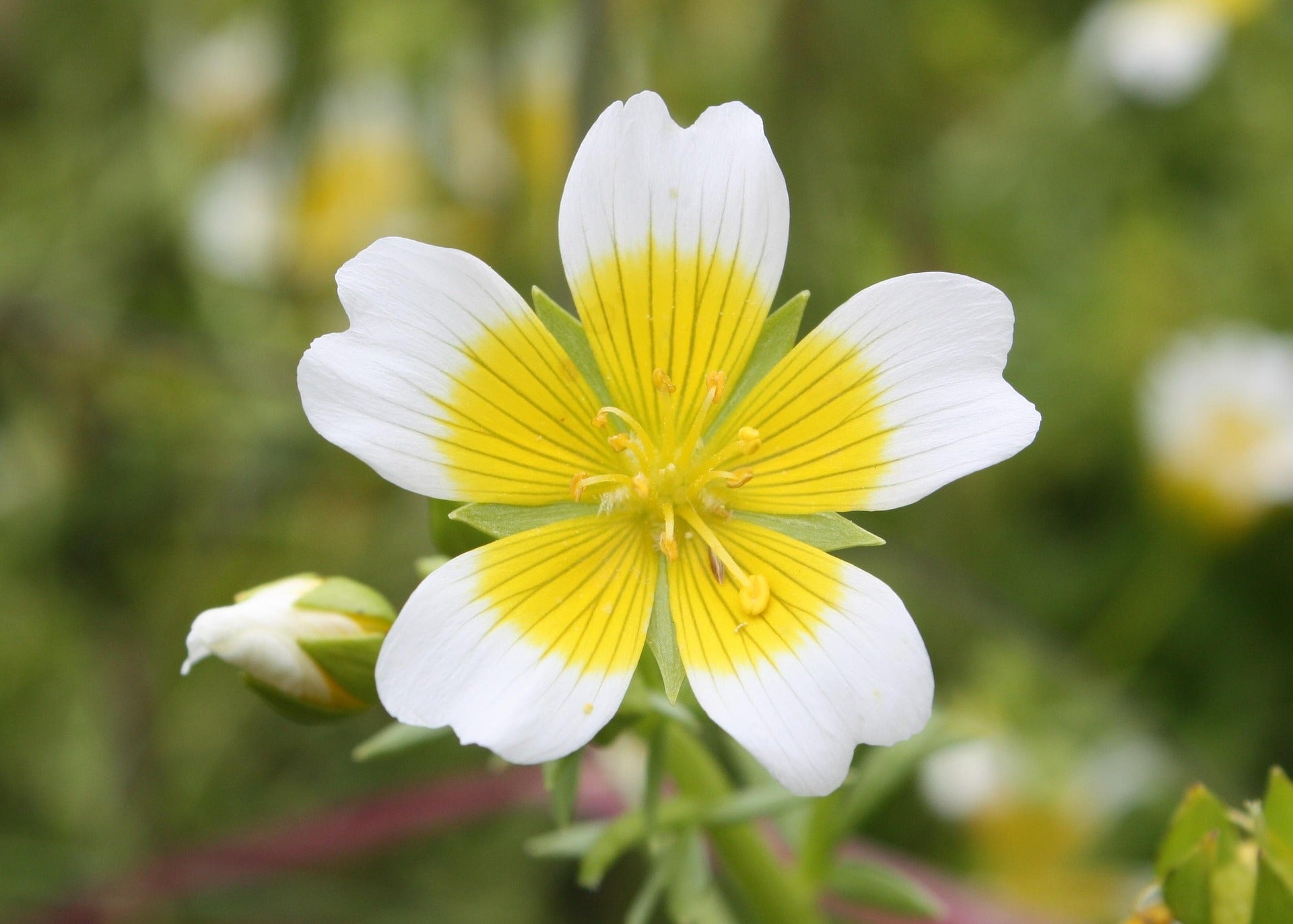Limnanthes Douglasii
Limnanthes Douglasii
Packet Size: 50 seeds
Couldn't load pickup availability
Limnanthes Douglasii has distinctive yellow saucer like flowers with white petal tips which leave no doubt why this is so widely known as the Poached Egg Plant. It is one of the most free-flowering scented annuals you can grow, and it is just so useful to have in your garden…with two RHS accolades, an AGM and a pollinators plant listing. More information about how you can harness the power of Poached Egg in your garden can be found below.
🌸 Flowering: from June, earlier from an autumn sowing.
📏 Height: to 15cm
🌿Annual
SOW & GROW: you’ve got a few options with limnanthes. Sow indoors Feb–March on the surface of moist, well-drained compost and cover lightly. Keep at around 16°C—germination takes 2–3 weeks. Pot on into 8cm pots, then plant out once frost has passed.
Or, sow outside in April or May where they’re to flower—just a light covering of soil is enough. Space plants about 15cm apart for edging or ground cover. If they’re too close, lift and replant. You can also sow into modules outdoors to help with spacing.
For earlier blooms next year, try an autumn sowing and protect from frost.
They’re easy-going in most soils and spots, but prefer sun and decent drainage. Water if growing undercover. Self-seeders can be moved—or composted!
📌USES
WILDLIFE BENEFITS
- A particular favourite for hoverflies (the aphid munching gardener’s friend)
- Nectar and pollen rich so very attractive to bees and other pollinators.
- Lacewings and ladybirds are also drawn in by Limnanthes
- Put those hoverflies to work near your roses by underplanting with Limnanthes
- Attract pollinators into your greenhouse and polytunnel with the nectar and pollen power of Limnanthes
- Plant in and around your vegetables – small and compact they are easy to transplant – treat them as companion planting for tomatoes, peppers, squash, pumpkins and courgettes: anything that would be helped by a friendly pollinator or two and some predatory support.
- As a green manure! Yes, late sow (or transplant self seedlings) amongst your kale and winter brassicas and allow to die back on the soil before digging in after harvesting those veggies.
SUITS:
- Vegetable gardens, greenhouses & polytunnels
- As ground cover or individual spot planting
- Path edging
- Companion planting
- Wildlife gardens and wildlife meadows (damper areas particularly)
- Patio and containers, hanging baskets
- Flower borders & as a bedding plant
- Courtyard gardens, informal and cottage styles
- Coastal locations, rocky and some exposure

Collapsible content
Sowing
- Mar
- Apr
- Sep
- Oct
Harvesting / Flowering
- May
- Jun
- Jul
- Aug
- Sep

